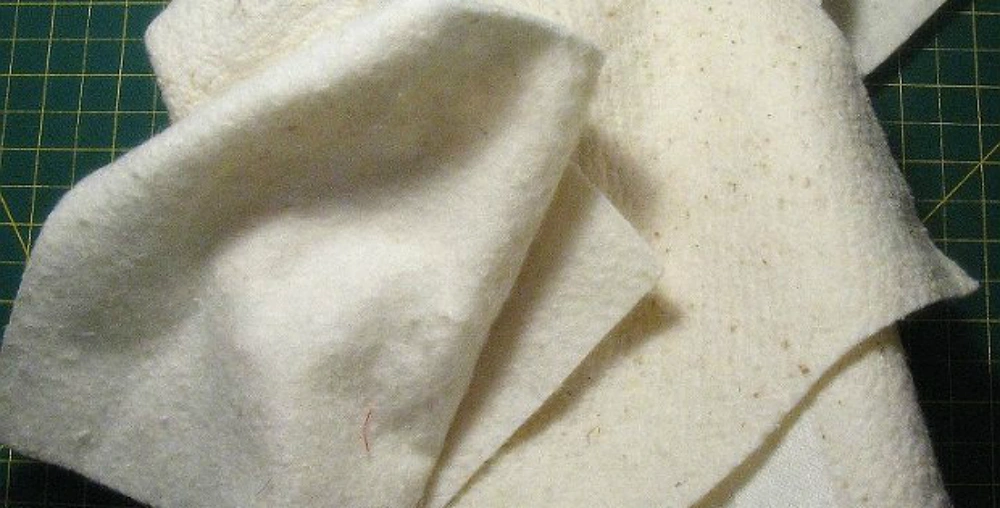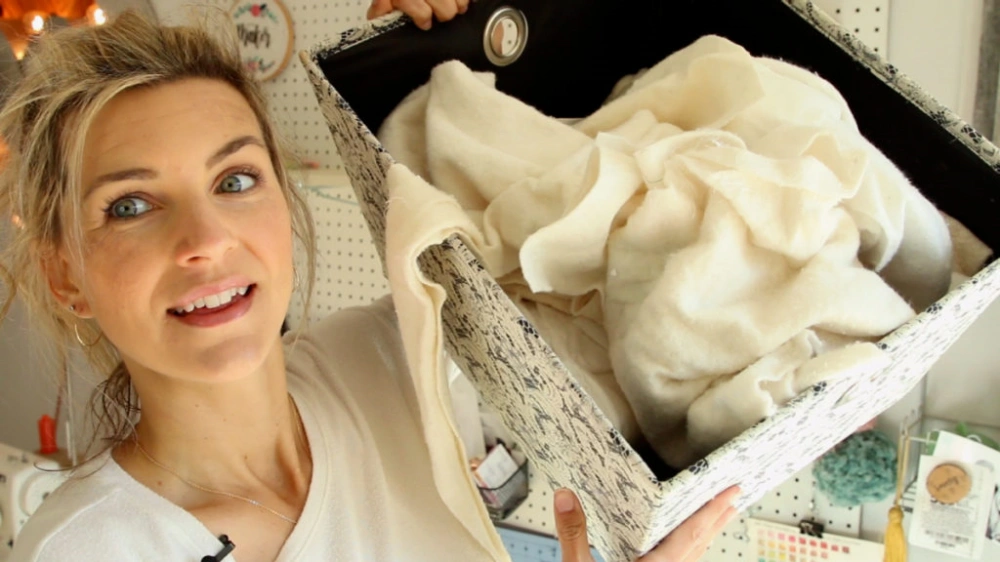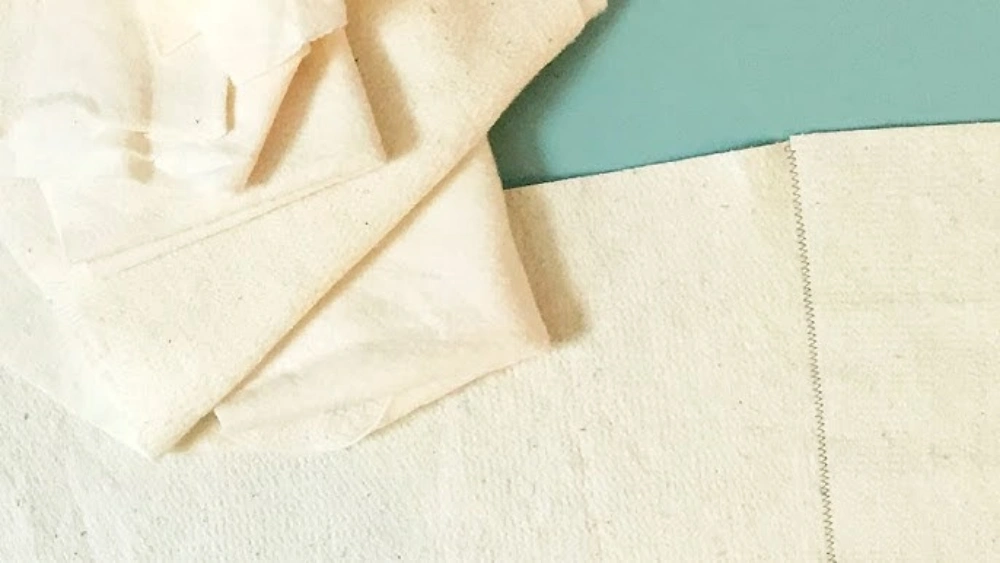You probably have leftover quilt batting scraps piling up after each project. Don’t toss them! When you reuse quilt batting scraps, you save money and help the planet. You can use batting scraps for new quilting ideas or creative crafts at home. If you have leftover quilt batting, you can easily sort and join those pieces.
Many quilters love to reuse quilt batting scraps for mug rugs, bags, or even as stuffing. Fanda Fabrics offers high-quality batting, so your batting scraps will always be soft and easy to handle. Take a look at your leftover quilt batting and get ready to use batting scraps in ways you never imagined.
Key Takeaways
Reuse leftover batting scraps to save money, reduce waste, and support eco-friendly quilting.
Sort scraps by type, size, and thickness to make joining easier and avoid lumps in your projects.
Join scraps using the frankenbatting zigzag stitch or fusible tape for smooth, durable seams.
Use batting scraps for small quilts, mug rugs, stuffing pillows or pet beds, and creative crafts.
Donate scraps to community groups or animal shelters to help others and reduce textile waste.
Why Reuse Quilt Batting Scraps?

Save Money and Reduce Waste
You probably notice leftover quilt batting scraps after every project. When you reuse quilt batting scraps, you save money and help the environment. Instead of buying new batting for every project, you can use what you already have. This simple habit helps you reduce waste and keeps useful materials out of landfills.
Many quilters use scraps for stuffing toys, pillows, or pet beds. You can even donate leftover quilt batting scraps to schools or community groups for art projects. Fanda Fabrics supports these sustainable practices by offering high-quality batting that lasts through multiple uses.
Tip: Compost natural fiber scraps like cotton or bamboo to return nutrients to the soil. This keeps your quilting eco-friendly and supports local gardening.
Sustainable Quilting Practices
Choosing to reuse quilt batting scraps makes your quilting more sustainable. Textile production uses a lot of water, land, and energy. By reusing leftover quilt batting, you cut down on the need for new materials. You also help reduce pollution and the environmental impact of textile waste.
Some quilters even collect scraps from estate sales or recycle bins, giving new life to materials that would otherwise be thrown away. Fanda Fabrics’ Cotton Quilt Batting, Batting, and Bulk Quilt Batting come in natural fibers, which you can compost or repurpose for future projects.
You can donate scraps to animal shelters for pet bedding.
Practice sewing techniques with small pieces.
Use thin scraps for birds’ nests by placing them outside.
Maximize Your Materials
You can get creative and maximize every bit of leftover quilt batting. Small scraps work great for mug rugs, placemats, or lap mats. Larger pieces can be joined together using fusible tape or a zigzag stitch to make new quilts.
Try the “frankenbatting” technique to stitch scraps into bigger pieces for any project size. Fanda Fabrics offers batting in different sizes and thicknesses, making it easy to match and join your scraps for seamless results.
Trim scraps to have straight edges.
Place pieces edge-to-edge for even thickness.
Stitch with a wide zigzag for smooth joins.
Lay out joined batting to check for bumps.
When you reuse quilt batting scraps, you make the most of your materials and support a sustainable quilting community.
Sorting Leftover Quilt Batting Scraps
Types and Qualities of Batting

When you start sorting leftover batting scraps, pay attention to the type and quality of each piece. Mixing different batting types can cause problems with shrinkage, loft, and texture. You want your quilt or craft project to look and feel consistent.
Here’s a quick table to help you identify the main types of batting and how they affect reuse:
Batting Type | Properties & Reuse Tips |
|---|---|
Cotton | Soft, breathable, shrinks after washing, gives a vintage look. Great for cozy quilts. |
Polyester | Holds shape, high loft, doesn’t shrink, easy to reuse for smooth projects. |
Cotton/Polyester Blend | Combines softness and resilience, moderate shrinkage, versatile for many projects. |
Wool | Warm, lightweight, shrinks like cotton, needs gentle care. |
Bamboo | Eco-friendly, soft, moisture-wicking, best for lightweight crafts. |
Fusible | Has adhesive, ideal for machine embroidery; reuse depends on adhesive strength. |
Fanda Fabrics offers batting in cotton, polyester, blends, and bamboo, so you can always find the right match for your project.
Sorting by Size and Thickness
You’ll get the best results if you sort batting scraps by both size and thickness. This step makes joining pieces much easier and helps you avoid lumps or uneven layers. Try these steps:
Group batting scraps by type first—keep cotton, polyester, and blends separate.
Sort each pile by size, from large sheets to small strips.
Organize by thickness, so you can match pieces with similar loft.
Label each pile with sticky notes or fabric markers. This helps you remember which pile is which, especially if you’re sewing scrap pieces over several days.
Tip: Save smaller scraps for cleaning, stuffing, or tiny craft projects. Use larger pieces for joining into new quilt layers.
Preparing Batting for Joining
Before you join batting scraps, you need to prep each piece for a smooth finish. Follow this simple tutorial:
Lay scraps on a flat surface, like a cutting mat.
Use a rotary cutter and ruler to trim edges straight and square.
Pin or tape the edges together to keep them aligned.
For sewing, butt the edges together and use a wide zigzag stitch—don’t overlap.
For fusing, place interfacing or fusible tape over the join and press with steam.
You’ll find that prepping your leftover batting scraps this way makes every tutorial easier and your finished project much neater. Fanda Fabrics’ batting comes in various sizes and thicknesses, so you can match and join pieces with confidence.
How to Join Quilt Batting Scraps?

Ready to turn those leftover batting scraps into something useful? You can join quilt batting using two reliable methods: frankenbatting (zigzag stitch) and fusible tape.
Both techniques help you seam it together for a smooth finish, whether you want to join large pieces for a new quilt or patch smaller scraps for craft projects. Let’s dive into tutorials that make the process easy and enjoyable.
Frankenbatting (Zigzag Stitch)
Frankenbatting is a classic way to join quilt batting scraps. You’ll see quilters use this method in many video tutorial guides because it’s cost-effective and works well for most natural fiber battings. If you want to create a frankenbatting quilt, follow this step-by-step tutorial:
Gather and sort your batting scraps by thickness and type. This keeps your joints even and prevents puckering.
Trim the edges of each piece straight using a rotary cutter, ruler, and cutting mat.
Lay out the trimmed pieces on your work surface. Butt the edges together—don’t overlap.
Set your sewing machine to the widest zigzag stitch with a normal stitch length. A walking foot helps feed the batting evenly.
Align the edges so they just touch. Sew along the seam with the zigzag stitch, catching both edges securely.
Continue stitching until you join large pieces into one panel.
Tip: Test your zigzag stitch width on a scrap first. Use neutral thread so the stitches blend into the batting.
Frankenbatting lets you reuse scraps for practice quilts, mug rugs, or even a full-size frankenbatting quilt. You’ll save money and reduce waste with every tutorial you try. Fanda Fabrics’ cotton and blend battings respond well to this method, giving you a durable and soft result.
Fusible Tape Method
If you want a quick and easy way to join quilt batting, fusible tape is a favorite in many video tutorial guides. This method works best for smaller projects or when you need a temporary hold. Fusible tape creates a soft, nearly invisible seam that you won’t feel in the finished quilt. Here’s a simple tutorial:
Trim batting scraps so the edges are straight and flush.
Place the pieces side by side on your work surface.
Cut a strip of fusible tape to cover the seam.
Lay the tape over the join, making sure it covers both edges.
Press with a stationary iron (don’t slide back and forth) using the recommended heat setting for your batting type.
Allow the seam to cool before handling.
Fusible tape works well with most cotton and blend battings from Fanda Fabrics. You’ll find the joint soft and smooth, especially after washing. For poly batting, the tape may not bond as well, so stick to natural fibers for best results.
Note: Fusible tape is perfect for mug rugs, placemats, and small crafts. For larger quilts, use the frankenbatting method for lasting durability.
Tips for Seamless Joins
Want your joined batting to look and feel flawless? Try these troubleshooting tips from experienced quilters and video tutorial guides:
Use scraps with the same fiber content and loft. Mixing types can cause puckering or visible lines.
Trim edges neatly. For extra strength, cut edges in a wavy or zigzag pattern to increase the bonding surface.
Press the fusible tape with a stationary iron. Let the seams cool fully before moving the batting.
Test your seam by sandwiching batting between fabric layers and running a test stitch.
Position seams away from high-stress areas like the quilt center or fold lines.
Roll joined batting instead of folding to avoid creasing the seams.
For extra security, apply fusible tape on both sides of the seam.
Limit the number of joins per quilt—ideally, no more than four or five—to keep your quilt strong.
Always align edges flush without gaps or overlaps.
Callout: Fanda Fabrics’ batting products are designed for easy joining. You can use either frankenbatting or fusible tape with confidence, knowing your quilt will stay soft and durable.
If you want more tutorials or a video tutorial, check out online quilting communities or Fanda Fabrics’ resources. You’ll find plenty of inspiration for joining batting scraps and making the most of every piece.
Use Batting Scraps for Projects
You might be surprised by how many creative ways you can use batting scraps. Whether you want to make small crafts, finish a quilt, or help your community, these leftover pieces can become the heart of new projects. Let’s explore some of the best ideas for using up your leftover quilt batting.
Quilting Projects
You can turn batting scraps into a wide range of quilted projects. Many quilters love to use batting scraps for mug rugs, placemats, and quilt-as-you-go placemats. These small projects are perfect for practicing new techniques or trying out fun fabric combinations.
If you have slightly larger pieces, join them together to make small quilts, raw-edge quilts, or even rag quilts. You can also make coasters, pot holders, table runners, and quilted bags. Some quilters use batting scraps to create quilted jackets or padded camera cases.
When you join scraps with fusible tape or the frankenbatting method, you can even build up enough batting for a new quilt top.
Here’s a quick list of popular quilting projects you can try with batting scraps:
Mug rugs and coasters
Placemats and quilt-as-you-go placemats
Pot holders and table runners
Small quilts, rag quilts, and raw-edge quilts
Quilted purses, bags, and mobile phone cases
Heart pillows for patients or children
Fabric Christmas ornaments and stockings
Key fobs and pincushions
Quilted apparel, like jackets
You can always count on Fanda Fabrics’ batting for projects large and small. Their batting lies flat, is easy to sew, and gives your finished pieces a professional look.
Household and Craft Uses
Batting scraps aren’t just for quilts. You can use batting scraps to make quilted bins, baskets, or wall hangings. Try lining a tote bag or adding padding to a laptop sleeve. If you want to make small crafts, batting scraps work well for pincushions, fabric bookmarks, or even soft toys.
Some crafters use up their leftover quilt batting by making padded keychains or fabric ornaments. You can also use batting scraps as interfacing in zipper pouches or to add structure to fabric boxes.
Tip: Trim your scraps to even shapes before sewing. This helps your projects look neat and feel sturdy.
Stuffing and Padding
If you have lots of small pieces, don’t throw them away. You can use batting scraps for stuffing and padding. Many people use batting scraps to fill pillows, poufs, or pet beds. Polyester batting works especially well for cushions and upholstery, giving a fuller, more luxurious look.
You can wrap foam cushions with batting to smooth out edges and make covers fit better. Some quilters even use batting scraps as stuffing for baby toys, teddy bears, or heart pillows for hospital patients. This is a great way to use for stuffing and keep your projects soft and comfortable.
Cleaning and Storage
You can use batting scraps for cleaning around the house. Cotton or bamboo scraps make gentle dusters for electronics or delicate surfaces. Use batting scraps to wipe down sewing machines, clean up spills, or polish glass.
If you garden, try composting natural fiber scraps or offering them to birds for nesting material. To keep your sewing space tidy, roll or fold your batting scraps by size and type. Some quilters organize scraps by color into “crumb rolls” for easy access during future projects.
Note: Store your batting scraps in clear bins or labeled bags. This makes it easy to find the right piece for your next project.
Community and Donation Ideas
Your batting scraps can make a real difference in your community. Many organizations accept donations of fabric and batting for charitable projects. You can donate to groups that make quilts for hospitals, foster children, or animal shelters.
Some sewing circles use batting scraps to stuff pet beds for local humane societies. Others use them for baby quilts or comfort pillows for patients.
Here’s a table of organizations that accept batting scraps:
Organization | Location | Donation Needs |
|---|---|---|
Compassion Quilts | Not specified | Fabric, thread, and batting for charitable quilts |
Stitching Hearts Worldwide | Pleasant Grove, Utah | Cotton fabric, yarn, fleece, batting, sewing tools |
Little Lambs of Utah | Utah | Fabric and batting for handmade baby quilts |
Serving with Smiles | Utah | Fabric and quilt batting for blankets and bags |
Pipers Project | Kansas | Fabric, thread, or batting for foster care quilts |
Binky Patrol | Nationwide | Fabric and quilting supplies for blankets |
Donating batting scraps helps reduce waste and supports people and animals in need. You help community groups make more quilts, lower material costs, and spread comfort to those who need it most.
Callout: Have you found new uses for batting scraps? Share your favorite projects or donation stories in the comments. Your ideas can inspire others to use batting scraps in creative ways!
Fanda Fabrics’ batting stands out for its quality and versatility. Whether you want to use batting scraps for small projects or join them for larger quilts, you’ll find their products easy to handle and long-lasting. When you use up your leftover quilt batting, you support sustainability and keep your craft budget-friendly.
Conclusion
You can turn leftover quilt batting scraps into useful and creative projects. Try joining scraps with frankenbatting or fusible tape, then use them for mug rugs, stuffing, or donation quilts.
Keep larger scraps for quilting, compost natural fibers, and organize by color for easy access.
Share your ideas with other quilters to inspire a sustainable community.
Fanda Fabrics offers quality batting for every project. What will you create next with your scraps? 😊
FAQ
Can you mix different types of batting scraps in one project?
You shouldn’t mix different batting types. Cotton, polyester, and blends shrink and feel different. If you want a smooth finish, stick with one type for each project.
What’s the best way to store leftover batting scraps?
You can roll or fold scraps by size and type. Use clear bins or labeled bags. This keeps your sewing space tidy and makes it easy to grab what you need.
How do you join small batting scraps for a larger quilt?
Try the frankenbatting method with a zigzag stitch. You can also use fusible tape for quick joins. Trim edges straight before joining for a smooth result.
Is Fanda Fabrics’ batting good for both hand and machine quilting?
Yes! You’ll find Fanda Fabrics’ batting soft, durable, and easy to sew. It works well for hand quilting and glides smoothly through your machine.
